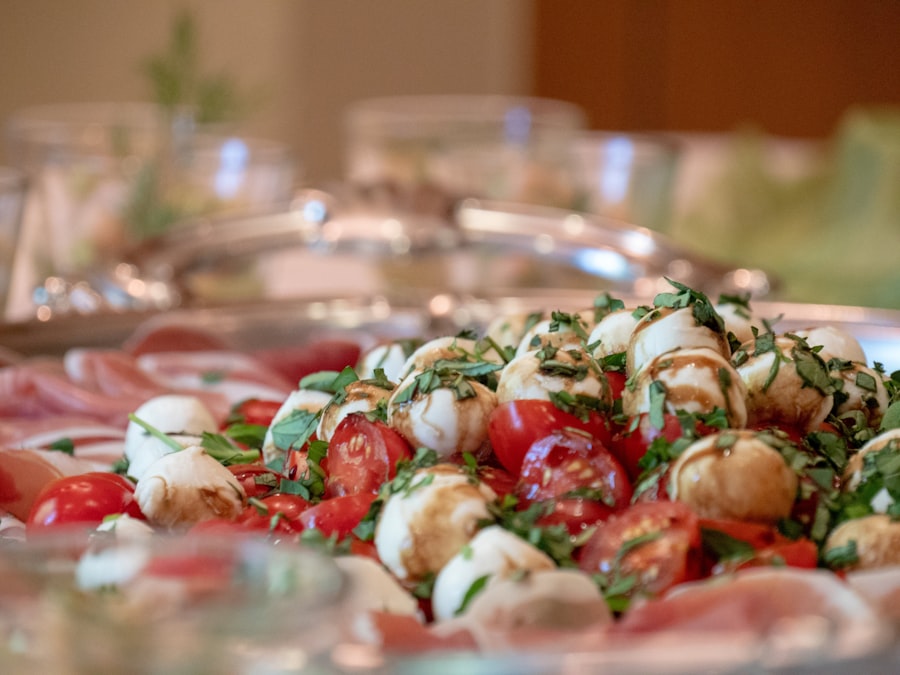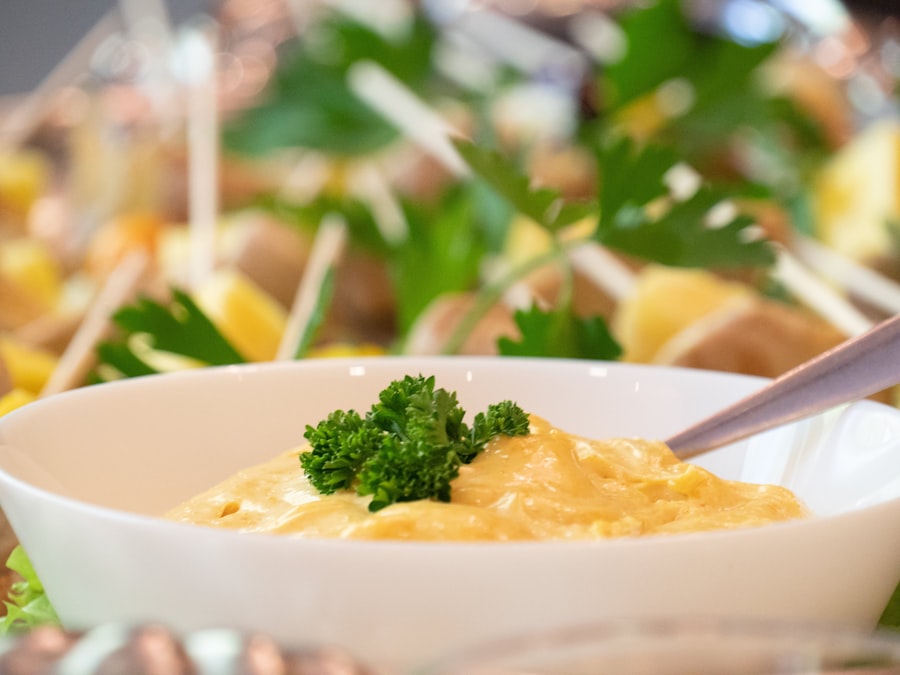Studio Ghibli, the renowned Japanese animation studio co-founded by Hayao Miyazaki and Isao Takahata, has captivated audiences worldwide with its enchanting storytelling and breathtaking visuals. Among the many elements that contribute to the studio’s charm, the depiction of food stands out as a particularly evocative aspect. Food in Studio Ghibli films is not merely a backdrop; it serves as a narrative device that enhances character development, evokes nostalgia, and immerses viewers in the rich cultural tapestry of Japan.
From the steaming bowls of ramen in “Spirited Away” to the whimsical pastries in “Kiki’s Delivery Service,” these culinary moments resonate deeply with audiences, often leaving a lasting impression long after the credits roll. The meticulous attention to detail in the portrayal of food reflects the studio’s commitment to authenticity and artistry. Each dish is crafted with care, showcasing not only the visual appeal but also the emotional connections that food can foster.
In many scenes, food becomes a symbol of comfort, love, and community, inviting viewers to share in the characters’ experiences. This exploration of food transcends mere sustenance; it becomes a lens through which we can understand the characters’ relationships and the worlds they inhabit. As we delve deeper into the art of food animation in Studio Ghibli films, we uncover how these culinary moments contribute to the overall narrative and emotional depth of the stories.
Key Takeaways
- Studio Ghibli’s food scenes are known for their attention to detail and ability to evoke nostalgia and comfort.
- The art of food animation in Studio Ghibli films is a meticulous process that involves studying real-life food and creating mouth-watering visuals.
- Iconic food moments in Studio Ghibli films, such as the ramen scene in “Ponyo” and the bento box in “Spirited Away,” have become beloved by fans worldwide.
- The cultural significance of food in Studio Ghibli films reflects the importance of traditional Japanese cuisine and the role of food in bringing people together.
- Studio Ghibli’s food scenes inspire real-life cooking and dining through their emphasis on simple, wholesome ingredients and the joy of sharing meals with loved ones.
- The lasting impact of Studio Ghibli’s food scenes is evident in the way they continue to resonate with audiences and inspire a deeper appreciation for the art of food in storytelling.
The Art of Food Animation in Studio Ghibli Films
Bringing Food to Life
The animators employ a variety of techniques to bring food to life, from the glistening sheen of freshly cooked dishes to the steam rising from a hot bowl of soup. This level of detail is not merely for aesthetic purposes; it serves to engage the audience’s senses, making them almost able to taste and smell the food depicted on screen.
The scene where she encounters a feast laid out before her is particularly striking. The vibrant colors and intricate details of each dish create an almost tactile experience for viewers.
A Celebration of Cultural Heritage
The animators’ ability to convey texture—whether it’s the crispness of vegetables or the softness of rice—enhances the realism of these culinary moments. This dedication to authenticity extends beyond visual representation; it also encompasses cultural nuances, as traditional Japanese dishes are portrayed with respect and accuracy, inviting viewers into a world rich with culinary heritage.
Iconic Food Moments in Studio Ghibli Films

Several scenes throughout Studio Ghibli’s filmography have become iconic for their portrayal of food, each contributing uniquely to character development and thematic depth. In “My Neighbor Totoro,” the simple act of sharing a meal becomes a poignant moment of connection between Satsuki, Mei, and their father. The scene where they enjoy rice balls, lovingly prepared by their mother, encapsulates warmth and familial love.
The rice balls themselves are animated with such care that they seem almost alive, embodying the nurturing spirit of home-cooked meals. Another memorable moment occurs in “Kiki’s Delivery Service,” where Kiki, a young witch, embarks on her journey of independence. The bakery run by Madame is not just a setting; it becomes a symbol of Kiki’s growth and her connection to her community.
The pastries are animated with an inviting charm, showcasing their golden crusts and delectable fillings. The joy that Kiki experiences while delivering these treats reflects her burgeoning confidence and sense of purpose. These scenes are not merely about food; they encapsulate themes of love, growth, and community, making them resonate deeply with audiences.
The Cultural Significance of Food in Studio Ghibli Films
Food in Studio Ghibli films serves as a powerful cultural signifier, reflecting Japan’s rich culinary traditions and societal values. The meticulous representation of traditional dishes—such as sushi, tempura, and bento—offers viewers a glimpse into Japanese culture and its reverence for food as an art form. In “Ponyo,” for instance, the depiction of meals emphasizes the importance of family and togetherness.
The scenes where Sosuke shares his lunch with Ponyo highlight not only the act of sharing but also the cultural significance placed on communal dining. Moreover, food often acts as a bridge between different worlds within Ghibli’s narratives. In “Spirited Away,” Chihiro’s encounter with food serves as a rite of passage into the spirit world.
The lavish banquet presented to her symbolizes temptation and excess but also highlights her struggle to maintain her identity amidst overwhelming change. This duality reflects broader themes within Japanese culture regarding consumption and moderation, illustrating how food can embody both pleasure and caution.
How Studio Ghibli’s Food Scenes Inspire Real-life Cooking and Dining
The enchanting food scenes in Studio Ghibli films have inspired countless fans to recreate these culinary delights in their own kitchens. The vivid depictions of meals often spark curiosity about traditional Japanese cooking techniques and ingredients. For instance, after watching “Spirited Away,” many viewers find themselves drawn to making their own versions of Chihiro’s rice balls or exploring the art of sushi-making.
The films serve as both inspiration and instruction, encouraging audiences to engage with food on a deeper level. Moreover, Ghibli’s portrayal of communal dining fosters an appreciation for shared meals among friends and family. The emphasis on cooking as an act of love resonates with many viewers, prompting them to gather around the table more often.
Social media platforms are filled with posts showcasing homemade dishes inspired by Ghibli films, from elaborate bento boxes to whimsical desserts reminiscent of those seen in “Kiki’s Delivery Service.” This phenomenon illustrates how Studio Ghibli’s food scenes transcend entertainment; they cultivate a sense of community among fans who bond over their shared love for both animation and culinary exploration.
The Lasting Impact of Studio Ghibli’s Food Scenes

The Power of Food in Storytelling
By elevating food animation to an art form, Studio Ghibli has transcended cultural boundaries. The films weave together elements of tradition, emotion, and artistry, leaving an indelible mark on both animation and culinary culture.
A Celebration of Life’s Simple Pleasures
As fans continue to recreate these dishes and share meals inspired by Ghibli films, they keep alive the spirit of connection that these culinary moments embody. By savoring these moments on screen and in their kitchens, audiences carry forward the legacy of Studio Ghibli—a celebration of life’s simple pleasures through the universal language of food.
A Lasting Impact on Animation and Culinary Culture
Studio Ghibli’s food scenes have left a lasting impact on both animation and culinary culture. As a result, the studio’s legacy continues to inspire new generations of animators, filmmakers, and food enthusiasts alike.
If you are interested in exploring the philosophical concepts of substance, causality, space, and time, you may want to check out this article on com/introduction-to-entities-substance-causality-space-and-time/’>Introduction to Entities: Substance, Causality, Space, and Time.
This article delves into the fundamental aspects of existence and the interconnectedness of these concepts. It provides a thought-provoking analysis that will expand your understanding of the world around you.
FAQs
What is Studio Ghibli known for?
Studio Ghibli is a Japanese animation film studio known for its captivating and visually stunning animated films, often featuring themes of nature, magic, and coming-of-age stories.
What are some popular Studio Ghibli films?
Some popular Studio Ghibli films include “Spirited Away,” “My Neighbor Totoro,” “Princess Mononoke,” “Howl’s Moving Castle,” and “Kiki’s Delivery Service.”
What is the article “Studio Ghibli’s Food Scenes – So Beautiful They Make You Hungry” about?
The article explores the visually appealing and mouth-watering food scenes depicted in various Studio Ghibli films, highlighting the artistry and attention to detail in the animation of food.
How does Studio Ghibli depict food in their films?
Studio Ghibli films often depict food in a way that is visually appealing, with a focus on the textures, colors, and presentation of the dishes. The animation of food is often so detailed and realistic that it can evoke a sense of hunger and craving in the audience.
What impact do Studio Ghibli’s food scenes have on viewers?
The food scenes in Studio Ghibli films have a powerful impact on viewers, often evoking a sense of nostalgia, comfort, and hunger. The attention to detail and the way food is depicted in the films can create a strong emotional connection with the audience.
Are the food scenes in Studio Ghibli films based on real dishes?
Many of the food scenes in Studio Ghibli films are inspired by real dishes from Japanese cuisine, as well as traditional and regional foods. The studio’s attention to detail and research in depicting food adds to the authenticity of the scenes.






















+ There are no comments
Add yours